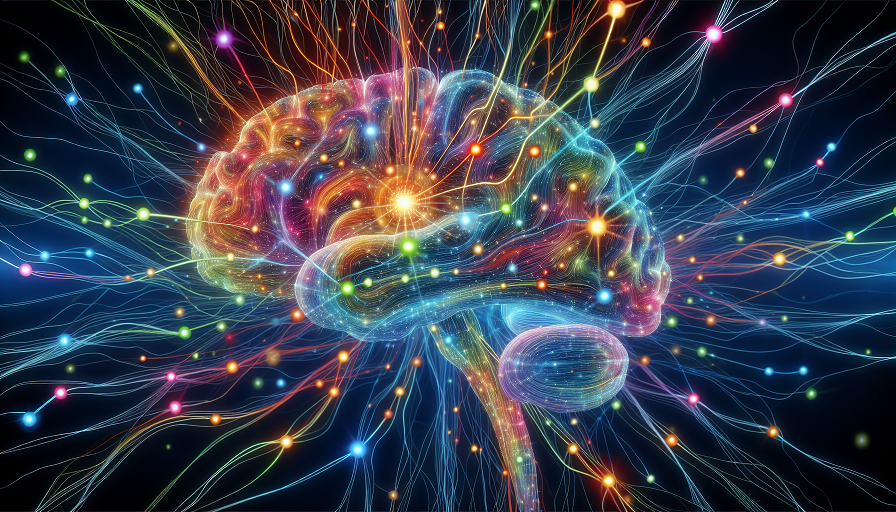
Short answer: Possibly, but effects are modest and compound-specific. Some colorful plant pigments – most notably saffron’s crocin/safranal and turmeric’s curcumin – have small clinical signals for mood support. Evidence for spirulina’s blue pigment (phycocyanin) is preliminary. Benefits, when they appear, likely come from anti-inflammatory, antioxidant, and circadian/gut-brain pathways rather than the “color” itself. Food-first approaches are sensible; supplement use warrants caution and realistic expectations.
Contents
What Counts as a “Plant-Based Dye”?
Natural colorants include curcumin (turmeric’s yellow), crocin/safranal (saffron’s golden hue), phycocyanin from Arthrospira (spirulina’s blue), betalains (beet’s red), anthocyanins (berries’ blues/purples), and annatto (bixin, orange). Many of these are bioactive polyphenols or carotenoids used in cooking and sometimes as supplements.
Why Pigments Could Touch Mood Pathways
- Immune–inflammation axis: Several pigments dampen NF-κB signaling and lower pro-inflammatory cytokines (e.g., IL-6, TNF-α). Lower inflammation is associated with better mood regulation in some individuals.
- Neurotransmitters and plasticity: Curcumin and saffron constituents are reported to influence monoamine systems (serotonin, dopamine, norepinephrine) and may upregulate BDNF – mechanisms tied to antidepressant effects.
- Oxidative stress & mitochondrial tone: Pigments scavenge reactive species and support mitochondrial efficiency, which can improve cellular energy in brain regions involved in motivation.
- Gut–brain modulation: Polyphenols interact with gut microbes, producing metabolites that affect the vagus nerve, tryptophan metabolism, and short-chain fatty acids relevant to mood.
What the Evidence Says (Compound by Compound)
Turmeric / Curcumin
Meta-analyses of small randomized trials suggest curcumin produces small improvements in depressive symptoms – often in people with elevated inflammation or comorbid conditions. An ongoing limitation is bioavailability: plain curcumin is poorly absorbed and rapidly metabolized. Formulations using piperine, lipids, or nanoparticles improve blood levels, but results remain heterogeneous. Expect subtle effects at best, over weeks, and not for everyone.
Saffron (Crocin, Safranal)
The most consistent clinical signal among food pigments: multiple trials in mild-to-moderate depression show saffron extracts outperform placebo and sometimes match standard antidepressants for symptom reduction – with fewer side effects. Samples are small, durations short (6–12 weeks), and product quality variable, but the direction of evidence is positive. Culinary doses are low; standardized extracts are typically used in studies.
Spirulina (Phycocyanin)
Evidence is early. Small studies report improvements in fatigue, stress, or mood indices, but designs vary and quality control is a concern (see safety). Mechanistically, phycocyanin shows anti-inflammatory and antioxidant actions; whether that translates to reliable mood benefits in healthy adults is unsettled.
Anthocyanins & Betalains (Berries, Beets)
These pigments support vascular function and nitric-oxide signaling, which can acutely aid attention/processing speed in some trials – likely via better cerebral blood flow and glucose handling. Direct antidepressant effects are less clear, but diets rich in colorful plants correlate with better mood and resilience.
Bioavailability & Dosing Caveats
- Curcumin: Pair with fat and a pinch of black pepper (piperine) in meals to enhance absorption. Supplement doses and forms vary widely; “more” is not automatically better.
- Saffron: Culinary use imparts flavor/color but delivers far less than most study extracts. Standardized products list crocin/safranal content; quality matters.
- Food first: Whole-food matrices often improve tolerance and provide co-nutrients (fiber, minerals) that support mood via the gut–brain axis.
Safety, Interactions, and Quality
- Spirulina quality control: Cyanobacterial products can be contaminated with microcystins or heavy metals if poorly sourced. Choose third-party-tested brands or favor food uses of pigments from well-regulated suppliers.
- Curcumin + piperine: Piperine can alter drug metabolism (CYP3A4, P-gp). Use caution with anticoagulants, antiplatelets, and some chemotherapy or cardiac meds; discuss with a clinician.
- Saffron: Generally well tolerated at studied doses, but very high intakes have uterine-stimulant effects – avoid in pregnancy unless advised by a clinician.
- Allergies/GI upset: Concentrated extracts may cause nausea or reflux in sensitive individuals. Start low, with food.
- Not a substitute for care: Persistent low mood, anhedonia, sleep/appetite changes, or suicidal thoughts require professional evaluation.
Practical, Food-First Ways to Experiment
- Golden basics: Cook with turmeric in lentils, eggs, or soups; add a pinch of black pepper and olive oil or ghee.
- Saffron wisely: Steep a few threads in warm water and add to rice or tea 3–4 times per week; consider standardized extracts only if culinary use is well tolerated and you’ve reviewed interactions.
- Blue-green caution: If using spirulina, choose certified, third-party-tested products; keep doses modest and monitor how you feel for 2–4 weeks.
- Color spectrum: Aim for two deeply colored plant foods per meal (berries, beets, red cabbage, spinach). Consistency beats megadoses.
- Track simply: Rate mood/energy (1–5) and sleep quality daily for two weeks as you add pigments. Adjust based on trends, not single days.
Bottom Line
Colorful plant pigments can be part of a brain-healthy diet, and a few – particularly saffron and curcumin – show small, clinically relevant signals for mood in some people. Effects are not dramatic, quality and dosing matter, and safety (especially with spirulina products) deserves attention. Start with food, keep expectations grounded, and treat pigments as supporting actors alongside sleep, movement, daylight, social connection, and meaningful work.

